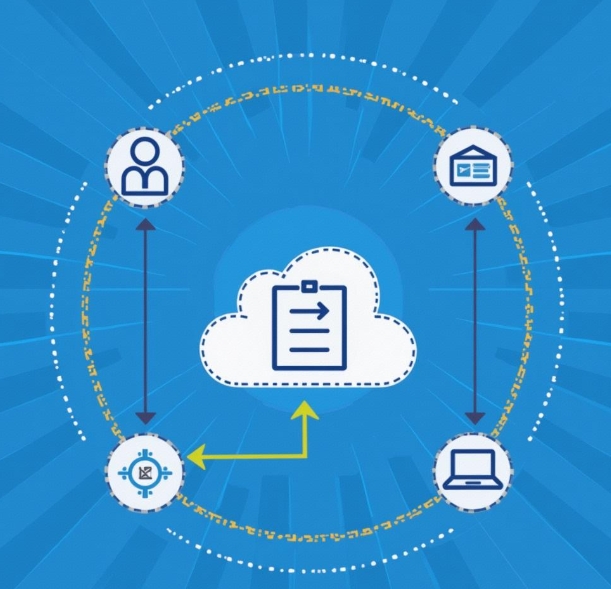How to Migrate and Optimize a Cloud Computing Platform
- latest articles
- 1.DApp Development & Customization: Merging Diverse Market Needs with User Experience 2.Analysis of the Core Technical System in DApp Project Development 3.How to achieve cross-chain interoperability in Web3 projects? 4.How does the tokenization of points reconstruct the e-commerce ecosystem? 5.How to Set and Track Data Metrics for a Points Mall? 6.What is DApp Development? Core Concepts and Technical Analysis 7.Inventory of commonly used Web3 development tools and usage tips 8.Development of a Distribution System Integrated with Social E-commerce 9.Six Key Steps for Businesses to Build a Points Mall System 10.What is DApp Development? A Comprehensive Guide from Concept to Implementation
- Popular Articles
- 1.Future Trends and Technology Predictions for APP Development in 2025 2.Analysis of the DeFi Ecosystem: How Developers Can Participate in Decentralized Finance Innovation 3.From Zero to One: How PI Mall Revolutionizes the Traditional E-commerce Model 4.DAPP Development | Best Practices for Professional Customization and Rapid Launch 5.Recommended by the Web3 developer community: the most noteworthy forums and resources 6.From Cloud Computing to Computing Power Leasing: Building a Flexible and Scalable Computing Resource Platform 7.How to Develop a Successful Douyin Mini Program: Technical Architecture and Best Practices 8.Shared Bike System APP: The Convenient Choice in the Era of Smart Travel 9.How to Create a Successful Dating App: From Needs Analysis to User Experience Design 10.From Design to Development: The Complete Process of Bringing an APP Idea to Life
I. The Necessity of Cloud Computing Platform Migration
Cloud computing platform migration refers to the process of transferring a company's data, applications, and business processes originally deployed on one cloud service provider's platform to another. There are many reasons for migration, typically including the following aspects:
Cost Optimization: Different cloud service providers offer varying service fees, and companies may wish to migrate to a more cost-effective platform.
Technological Advancement: With the continuous development of cloud computing technology, new cloud platforms provide more advanced technologies and services, and companies may seek to gain a technological advantage through migration.
Changes in Business Needs: Business expansion or transformation may require greater computing power, storage capacity, or higher security.
Compliance and Data Sovereignty Requirements: Some companies' compliance requirements may compel them to migrate data to a platform that better aligns with local laws and regulations.

II. Steps for Cloud Computing Platform Migration
Migrating a cloud computing platform is not a simple task. To ensure a smooth migration process, companies need to plan and implement according to specific steps and strategies.
1. Migration Requirements Analysis and Assessment
The first step in migration is to conduct a requirements analysis and assess the existing environment. Companies need to clarify migration goals, evaluate the usage of the current platform, and identify challenges. For example, whether there are performance bottlenecks, a need to improve disaster recovery capabilities, or a need for more flexible resource allocation. Additionally, it is essential to assess the technical capabilities, cost structure, and compatibility with existing systems of the new platform.
2. Selecting a Cloud Service Provider and Platform
Choosing the right cloud service provider is one of the critical decisions in the migration process. Common cloud service providers include Amazon AWS, Microsoft Azure, and Google Cloud (GCP). When selecting, companies need to consider multiple factors:
Technical Capabilities: Whether the platform provides the required technical support, such as container services, serverless computing, and big data processing capabilities.
Service Quality: The platform's stability, availability, and customer support services.
Cost Structure: Whether it fits the company's budget requirements and offers flexible billing models.
Compliance and Security: Whether the platform complies with local regulations and provides the necessary security measures required by the company.
3. Developing a Migration Plan and Timeline
Once the target platform is selected, the next step is to develop a detailed migration plan. The migration plan should include the following:
Migration Goals and Milestones: Clearly define specific migration goals and key timelines.
Resource Planning and Allocation: Determine the computing, storage, network, and other resources required for migration.
Personnel Arrangements: Assign a dedicated team to oversee the migration process and clarify each member's responsibilities.
Risk Management: Identify potential technical and business risks during migration and develop contingency plans.
4. Data and Application Migration
Data and application migration is the core part of the migration process. At this stage, companies need to transfer existing data from the old platform to the new one, ensuring data integrity and consistency. Specific operations include:
Data Migration: Use data migration tools provided by the cloud service provider or third-party tools to migrate data from the source platform to the target platform.
Application Migration: For traditional virtual machine environments, virtual machine migration tools can be used; for microservices architectures, container migration may be required.
Business Migration: Ensure business continuity during migration, avoid prolonged downtime, and maintain data synchronization throughout the process.
5. Testing and Validation
After migration, comprehensive testing and validation must be conducted to ensure that data and applications function correctly on the new platform. Testing includes:
Functional Testing: Verify that application functions are consistent with the original platform.
Performance Testing: Ensure the new platform delivers the expected performance.
Security Testing: Check if the platform's security configurations meet company requirements to prevent data breaches and attacks.
6. Switchover and Monitoring
After completing testing and validation, companies can officially switch to the new cloud platform. During the switchover, the following points must be noted:
Gradual Switchover: Adopt a phased switchover strategy, migrating some applications or services first, and proceed with a full switchover only after verification.
Continuous Monitoring: Closely monitor the platform's performance in the initial post-switchover period to promptly identify and resolve issues.

III. Optimization of Cloud Computing Platforms
In addition to migration, cloud platform optimization is also a crucial part of long-term business development. The goal of optimization is to improve resource utilization efficiency, reduce costs, and enhance system performance and reliability.
1. Resource Management and Automation
Resource management is a key aspect of cloud platform optimization. Companies can use automation tools to achieve dynamic scheduling and allocation of resources, avoiding over-provisioning or resource waste. Common optimization methods include:
Auto-Scaling: Automatically adjust computing resources based on business load.
Resource Pooling: Manage different types of resources (e.g., computing, storage, network) in a pooled manner to improve resource utilization.
Pay-as-You-Go: Pay based on actual usage to avoid unnecessary fixed costs.
2. Performance Optimization
Cloud platform performance optimization involves more than just increasing computing resources; it also includes the following aspects:
Load Balancing: Use load balancers to distribute traffic reasonably across different servers or service instances, improving overall system responsiveness.
Content Delivery Network (CDN): Use CDN to accelerate the distribution of static resources and improve user access speed.
Database Optimization: Optimize cloud databases through indexing, query optimization, etc., to enhance data access efficiency.
3. Security and Compliance Optimization
The security and compliance of cloud platforms are critical considerations for companies. Optimizing security measures can reduce the risk of data breaches and system intrusions. Common optimization measures include:
Encryption Technology: Encrypt stored and transmitted data to ensure data security.
Multi-Factor Authentication: Enhance the security of accounts and applications.
Compliance Audits: Conduct regular compliance checks to ensure the platform meets relevant legal and regulatory requirements.
4. Cost Control
Cost optimization is a key objective of cloud platform optimization. Companies can achieve cost control through the following methods:
Using Prepaid and Long-Term Subscriptions: Purchase long-term resource packages to enjoy lower discounts.
Resource Reclamation: Regularly check and reclaim unused cloud resources to avoid unnecessary expenses.
Budget Management: Use budgeting and alert features to ensure cloud spending does not exceed predefined limits.
IV. Summary
Cloud computing platform migration and optimization is a systematic process involving multiple stages, from requirements analysis and technology selection to resource allocation, data migration, and optimization management. Successful migration and optimization can effectively enhance the flexibility, performance, and cost-effectiveness of a company's IT architecture, thereby driving business development. When undertaking cloud computing platform migration and optimization, companies must plan carefully, make prudent decisions, and ensure thorough testing and risk control during execution.
-

Applications and Challenges of Cloud Computing in the Internet of Things (IoT)
With the continuous advancement of information technology, cloud computing and t···
-

Integration of Cloud Computing and Artificial Intelligence: Enhancing Intelligent Applications
With the rapid advancement of technology, cloud computing and artificial intelli···
-

Data Security and Privacy Protection in Cloud Computing Applications
With the continuous advancement of information technology and the rapid developm···

 Blockchain
Blockchain










